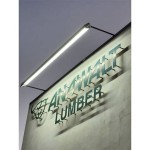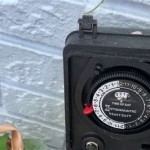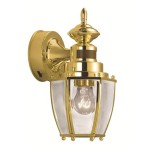Outdoor Lighting Calculation Methods
Outdoor lighting is essential for enhancing safety, security, and aesthetics in various settings, from residential properties to commercial spaces and public areas. Effective outdoor lighting design requires careful consideration of factors like illuminance levels, light distribution, and energy efficiency. Accurate lighting calculations are crucial for achieving desired outcomes and ensuring proper illumination. This article will delve into the common methods employed for outdoor lighting calculations, providing a comprehensive understanding of the principles and techniques involved.
1. Illuminance Calculation
Illuminance refers to the amount of light falling on a surface. It is measured in lux (lx), with 1 lux being equal to 1 lumen per square meter. Accurate illuminance calculations are essential to ensure adequate lighting levels for various outdoor applications, such as walkways, parking lots, and sports fields. The following equation is used to calculate illuminance:
Illuminance (lx) = Luminous flux (lm) / Area (m²)
The luminous flux is the total amount of light emitted by a light source, measured in lumens (lm). The area is the surface area being illuminated in square meters (m²). To determine the required luminous flux for a given illuminance level and area, simply rearrange the equation:
Luminous flux (lm) = Illuminance (lx) × Area (m²)
For instance, if you need an illuminance level of 20 lux for a 100 square meter parking lot, the required luminous flux would be 20 lx × 100 m² = 2000 lumens. Note that this is a simplified calculation and does not account for light loss due to factors like absorption, reflection, and distance.
2. Light Distribution and Uniformity
Beyond illuminance, it is crucial to consider the distribution of light across the illuminated area. Uniformity refers to the evenness of illumination. A well-designed outdoor lighting system aims for uniform light distribution, avoiding excessively bright spots or dark areas. This is achieved by selecting appropriate luminaires (light fixtures) and considering their light distribution patterns. Common light distribution patterns include:
•
Type I:
Wide distribution, ideal for general area lighting. •Type II:
Medium distribution, suitable for walkways and parking lots. •Type III:
Narrow distribution, suitable for accent lighting and highlighting specific features.Luminaires with different light distribution patterns can be combined to achieve desired uniformity and highlight specific areas. For instance, Type I luminaires can provide general area lighting, while Type III luminaires can illuminate specific landscape features or signage.
3. Light Loss Factors
In real-world applications, light loss factors significantly impact illuminance levels. These factors reduce the amount of light reaching the desired surface and should be accounted for in lighting calculations. Common light loss factors include:
•
Luminaire Depreciation:
The gradual decrease in luminous output over time due to aging and deterioration. •Lamp Depreciation:
The decrease in luminous output of lamps over time. •Dirt Depreciation:
The reduction in light output due to dirt and dust accumulation on luminaires and lamps. •Ambient Temperature:
Temperature variations can affect lamp efficiency and light output. •Reflector Depreciation:
Reduction in reflectivity of reflectors over time. •Distance:
Light intensity decreases with distance from the light source. •Absorption:
Light absorption by the surrounding environment, such as trees and walls.These factors are typically expressed as percentages and are applied to the initial calculated luminous flux to determine the actual illuminance level at the target surface. For example, if the initial calculated illuminance was 20 lux and the total light loss factor is 20%, the actual illuminance would be 16 lux (20 lx × 0.8 = 16 lx).
4. Lighting Software and Simulation Tools
Lighting software and simulation tools offer advanced capabilities for outdoor lighting calculations. These tools provide comprehensive features for designing, analyzing, and visualizing lighting systems. They allow users to model the lighting environment, define luminaires, and simulate light distribution. Software like DIALux evo, Relux, and AGi32 provide a wide range of features for outdoor lighting design, enabling users to:
•
Import site plans and CAD drawings:
Create accurate representations of the outdoor space. •Select and configure luminaires:
Choose from a vast library of luminaires and adjust their parameters. •Simulate light distribution:
Visualize how light is distributed across the space. •Analyze illuminance levels:
Evaluate illuminance levels at various points within the space. •Assess glare and uniformity:
Analyze potential glare issues and evaluate the uniformity of illumination. •Optimize energy efficiency:
Design lighting systems for optimal energy consumption. •Generate reports and documentation:
Create professional reports and documentation for the project.Lighting software empowers designers to create highly efficient and effective outdoor lighting systems that meet specific project requirements.
Area Lighting Design Calculations Part One Electrical Knowhow
Area Lighting Design Calculations Part One Electrical Knowhow
Area Lighting Design Calculations Part One Electrical Knowhow
Point By Method For Lighting Design Electrical Knowhow
Lighting Calculations
Point By Method For Lighting Design Electrical Knowhow

Street Lighting Design Layout Calculations Electrical4u

Voltage Drop Calculation Example
Area Lighting Design Calculations Part One Electrical Knowhow
Area Lighting Design Calculations Part One Electrical Knowhow







